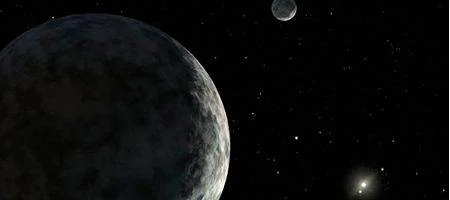Eris – the dwarf planet that led to Pluto’s demotion from planetary status – appears actually to be smaller than Pluto after all.

When Eris was first discovered in 2005, it was measured at about 1,500 miles across, about five percent bigger than Pluto.
But a year ago, Eris passed in front of a star, allowing a more accurate measurement. Using two telescopes in Chile, astronomers took another look – only to conclude that it was in fact about 1,400 miles across, almost exactly the same as Pluto.
“It could be smaller, it could be larger; basically, it is a twin,” says Bruno Sicardy of the Paris Observatory.
Eris, though is denser, so it’s 27 percent more massive. And it’s a great deal brighter, thanks probably to a surface layer of nitrogen or methane frost. Indeed, it appears to be the second-brightest object in the solar system, after Enceladus.
If the brightness is indeed caused by as frozen atmosphere, then Eris is doomed to end up smaller than Pluto. When it approaches it’s closest point to the sun, the atmosphere will unfreeze. Pluto, slightly closer to the sun, still has a gaseous atmosphere, albeit very thin.
“If you take into account Pluto’s atmosphere, it [Pluto] is clearly bigger. In a century or two it will be reversed,” says Sicardy.






